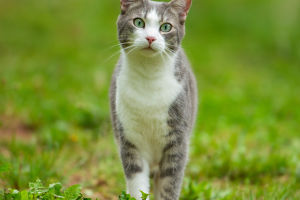In the grand tapestry of nature, human beings have traditionally been celebrated for their unique ability to create tools.
This remarkable skill, often viewed as a hallmark of intelligence, has recently been challenged as more and more species display similar capabilities.
From crafty crows to ingenious alligators, the world of animal behavior is revealing an extraordinary capacity for innovation that rivals that of humans.
Surprising Tool Users
One of the most notable examples is the boxer crab, which cleverly wields stinging anemones as a form of defense. Similarly, American alligators have been observed perfectly balancing sticks atop their snouts to attract nesting egrets.
Even in the avian world, parrots use diverse objects not just for scratching, but also innovatively to navigate through their environment.
This trend continues to grow, with recent findings highlighting species like the New Caledonian crow, which creatively employs tools to transport items and grind materials, emphasizing the evolving understanding of tool use in the animal kingdom.
Understanding Intelligence
The discourse surrounding animal intelligence often associates tool use with a higher level of cognition. However, this perspective may require reevaluation.
Although many species exhibit sophisticated tool-making skills, some of these behaviors are genetically encoded processes rather than indicators of true reasoning or understanding.
The complex nests built by termites are a prime example. Despite their tiny brains, termites can construct impressive structures that fulfill their environmental requirements. This raises an intriguing question: does the ability to create tools necessarily equate to intelligence, or could it simply be instinctual behavior?
Variations in Flexibility
To better comprehend the breadth of animal intelligence, researchers examine the flexibility with which species solve problems. A flexible mindset allows animals to adapt and apply what they’ve learned in one context to new challenges.
For instance, while Egyptian vultures utilize rocks to open ostrich eggs, it remains critical to assess how adaptable their problem-solving skills are when faced with varied tasks. If an object is unavailable, can they select an alternative?
Constantly Evolving Views
As research into animal behavior continues to burgeon, it frequently challenges preconceived notions of human uniqueness. With creatures consistently surprising researchers, the question arises: are humans truly the benchmarks of intelligence?
Even among tool-using species, proficiency in problem-solving tasks seems less about tool use itself and more about adaptability and innovation.
For instance, blue have ingeniously learned to pop open milk bottle caps to access food – behavior that spread quickly throughout their population.
Rethinking Intelligence
The reality is that humans are not the exclusive authors of tool use in nature. The actions and innovations exhibited by various species offer captivating insights into their interactions with the environment.
From chimpanzees utilizing leafy sponges to access sap, to clever crows crafting tools, the evidence increasingly suggests that intelligence transcends human boundaries. Perhaps it’s time to embrace a broader understanding of what it truly means to be smart.

